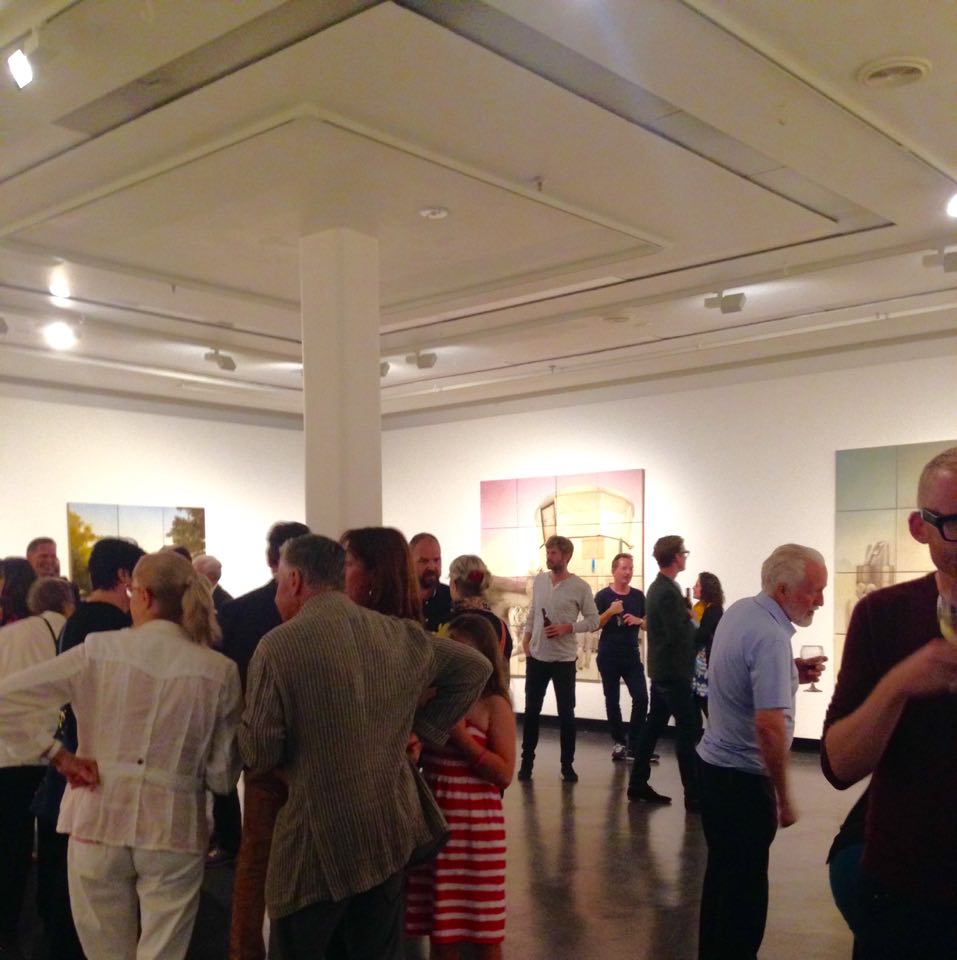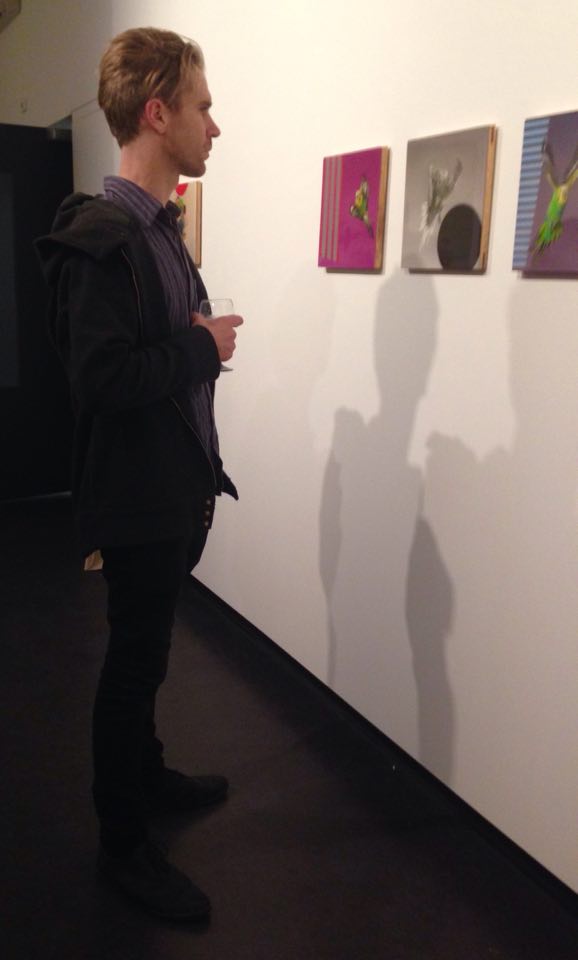BY SOPHIE HEIZER
Last night, the RMIT School of Art had the rare pleasure of hosting the work of Adelaide born contemporary artist and RMIT University academic Sam Leach.
With an impressive set of post-nominals already under his belt, Leach’s latest exhibit at RMIT’s School of Art gallery was the last step towards adding one more.
Holding a bottle of beer in his right hand, Leach blends in to the small crowd of wine-sipping gallery viewers. Although he doesn’t make his presence obvious, waves of people approach Leach to strike up conversation.
“Hey man, sorry to interrupt, I really wanted to thank you for the artwork and give you a little present,” says one.
Leach is glad to have the opportunity to show in Melbourne. It means he can invite his friends and family, unlike when his work is in exhibitions in Sydney or abroad. However, he acknowledges the keen contrast between these shows and the actual work that takes place behind it all.
“It is mostly really solitary work,” he says.
“There are these few occasions where you come out and connect with people and talk about it. It’s a really enjoyable thing, but I wouldn’t want to do too many of them,” he laughs.
Most of his work involves strange contrasts. As an artist, Leach has largely explored themes of science, and the relationship between humans and animals.
While he says art and science have developed their own very separate cultures, with art taking a subjective and imaginative route, and science taking what he calls a “colder, more rational” route, he also says both practices are full of influences from each other.
“There’s this emotional vein that goes through science. There’s this passion, and this intuitive response, and people feeling their way to the correct answers and then working backwards to establish a proof, and the same thing happens in art.”
For his PhD thesis project, Leach is looking at the history of how art has represented the culture of science.
“Science has grown to become a dominant cultural force in society, and it seems like it’s maybe a little bit underrepresented in art, and probably a little bit under-theorised in general, given the influence it has on contemporary culture.”
Leach says he began this project with a totally positive view of science but that changed during his time working on his thesis.
“I think sometimes there can be a slight side-stepping of moral responsibility, which should be taken seriously,” he says.
“Science is sometimes connected with corporate or commercial activities, and you can question whether some branches of research are ultimately in the best interest of humans as a species.”
Coming to the end of his exit thesis and this project, Leach has mixed feelings both about the assessment and the work that he has created.
“It was a big relief to get to the end of that, because it was a big workload, but at the same time, there’s all this regret because in a couple short months, I could have done so much more and explored all these other avenues that I meant to get to.”
Thankfully, both art and science are disciplines, which allow for ever-continuous exploration.



